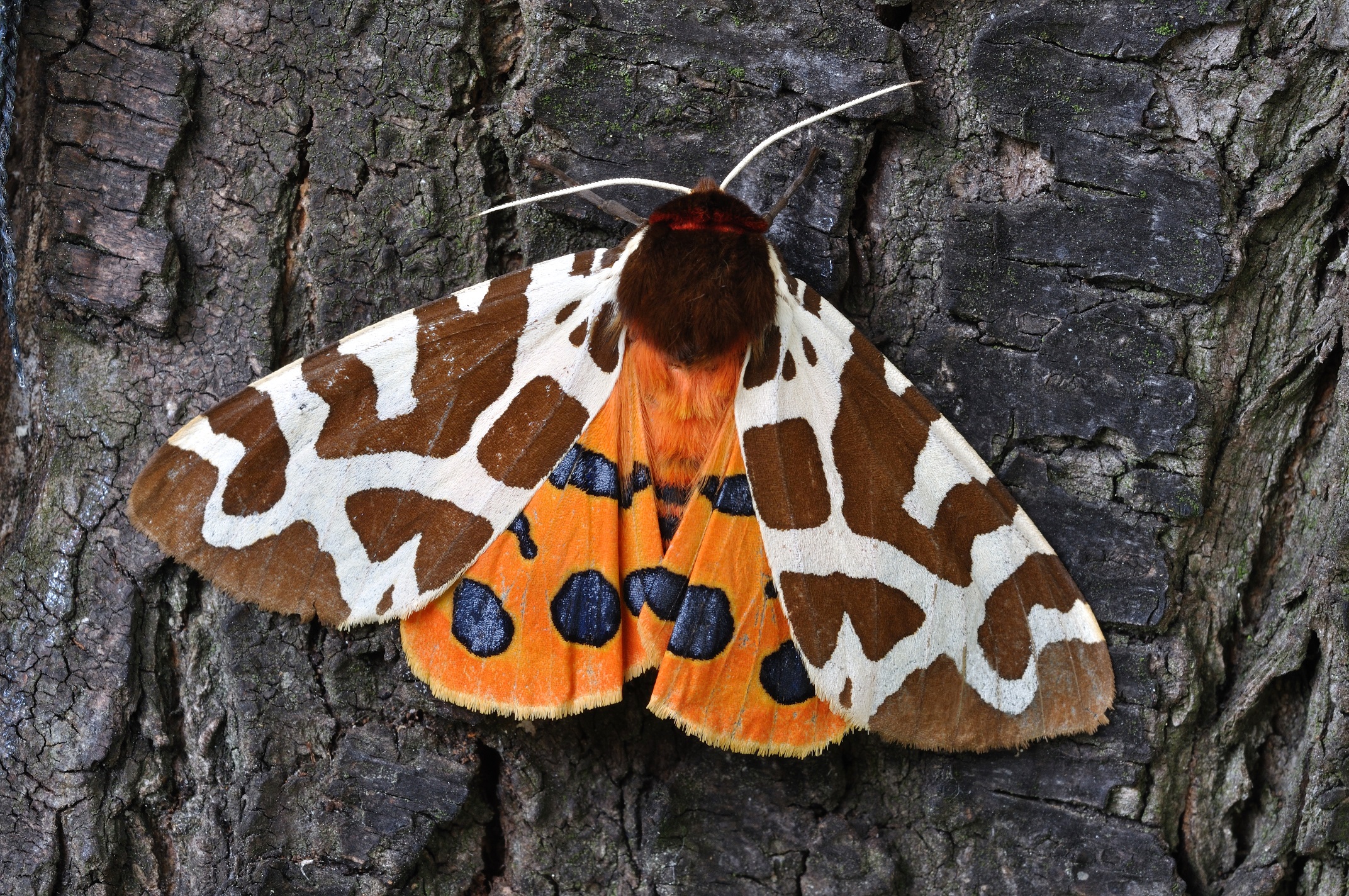By Elizabeth McArdle
Let’s talk about moths. Many of us find these drab, hairy, clothes-eating insects hard to love. However, irrespective of popular belief, moths are absolutely amazing and there is much more to these mostly nocturnal fliers than meets the eye.
Let’s hear it for the 99.9% of moths that don’t eat our clothes but instead provide us with a huge array of ecological benefits. These benefits range from pollinating our crops and plants to feeding a wide variety of wildlife such as baby birds, frogs and even small mammals.
Every moth is incredibly beautiful. Their range of colours, shapes and sizes is extraordinary and chief among these is the Garden Tiger Moth. When resting during daylight hours, its front wings are dark with a white pattern and tucked underneath are the back wings, which are flaming orange with black dots. If threatened, its back wings open and this pattern serves as a warning to predators to stay away as some of its body fluids are poisonous. Incredibly, Tiger Moths produce an ultrasonic clicking sound which effectively blocks bat sonar, thus inhibiting the bat’s ability to find them as they hide among the vegetation.
Pale-coloured flowers that open or release their fragrance after sunset are calling to moths. Moths answer this call by providing pollination in exchange for nectar. This wonderful relationship benefits all of life, especially we (or us) humans.
Would you consider spending an enchanted evening with moths? This gentle art is called mothing and has become very popular in recent years. After dark, on a summer’s evening, set up a lamp outside or place a chair near a fragrant plant such as a buddleia and they will come. Sit very still and in the silence God will be there in the company of the marvellous moths.

